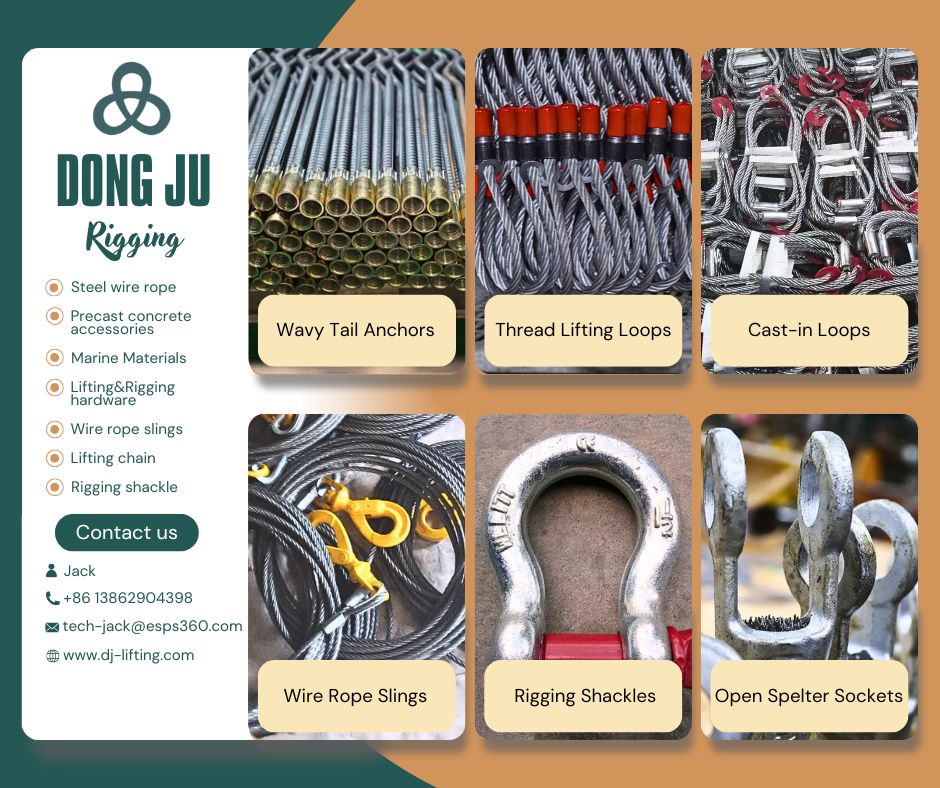Selection of Rigging Equipment Specifications and Types: When selecting rigging equipment specifications, factors such as the size, weight, and shape of the load being lifted, as well as the intended lifting method, must be taken into account. The working environment and the type of load must also be considered. Rigging equipment of appropriate capacity and length should be chosen to meet both load requirements and intended usage. If multiple rigging equipment pieces are used simultaneously to lift a load, they must be of the same type. The material of flat rigging equipment should not be affected by the environment or the load. Whether accessories or soft lifting ears are required, careful consideration must be given to the compatibility of the rigging equipment's end segments and auxiliary accessories with the lifting equipment.
Proper Use Angles of Rigging Equipment: When using flat rigging equipment with soft lifting ears, the minimum length of the lifting ears used must not be less than 3.5 times the thickness of the hook's contact part, and the maximum included angle of the lifting ears' movement must not exceed 20°. When connecting rigging equipment with soft lifting ears to lifting appliances, the contact part of the rigging equipment and the lifting appliance must be aligned, unless the axial width of the rigging equipment does not exceed 75mm, in which case the bending radius of the lifting attachment must be at least 0.75 times the axial width of the rigging equipment. For example, the radius of the lifting ear on the hook must be at least 0.75 times the axial width of the rigging equipment. The width of the fabric may be affected by the radius of the inside part of the hook, resulting in hindering the balanced action of the fabric's width. Rigging equipment must not be overloaded, and the correct usage coefficient must be applied. The maximum working force may already be provided on the label, and multiple combined rigging equipment must not exceed the maximum included angle in the vertical direction.
Follow Good Rigging Practices: Plan the lifting and handling procedures before starting the lifting operation.
Proper Use of Rigging Equipment Connection Methods During Lifting: Rigging equipment must be properly placed and connected to the load in a safe manner to ensure that the load is evenly distributed across the width of the rigging. Knots or twists must never be made in the rigging, and the sewn parts of the rigging must not be placed on the hook or lifting equipment but always on the upright part of the rigging to prevent damage to the label by keeping it away from the load, hook, and tightening angle.
Precautions for Using Multiple Combined Rigging Equipment: The assessment of the maximum working force of multiple combined rigging equipment depends on the symmetry of the load-bearing branches of the combined rigging equipment, i.e., when lifting, the branches of the rigging equipment are symmetrically and evenly distributed according to the design. In a 3-combination rigging, if the branches cannot be evenly stressed according to the design, the maximum force near the design angle will be calculated. The same applies to a 4-combination rigging if the load is not rigid, it will be calculated similarly. Note: For rigid loads, most of the gravity may be borne by three branches, or even two branches, and the remaining branch only serves to balance the load.
Protection of Rigging Equipment during Lifting: Rigging equipment should be kept away from sharp edges, friction, and wear, whether away from the load or lifting equipment. Proper reinforcement and protection of the appropriate parts of the rigging against sharp edges and wear are necessary, and additional reinforcement protection supplements are required if necessary.
Ensure Load Balance during Lifting: During lifting, rigging equipment must be used safely to prevent the load from tilting or slipping from the rigging; rigging must be arranged directly above the load and lifting point to balance and stabilize the load. If the load is not directly below the lifting point, the moving rigging may pass over the load, resulting in danger.
Rigging Equipment Lifting Methods: If using basket lifting, load safety can be ensured as there is no locking behavior like the one in hook lifting, and the rigging can flip through the lifting point. It is recommended to use two rigging equipment pieces together, and the limbs of the rigging should hang as vertically as possible to ensure equal load sharing between branches. When flat rigging is used for hook lifting, it should be allowed to be placed in a natural angle (120°) to avoid generating heat due to friction during tensioning. The correct and safe method is to use a double hook for one rigging. Double hook lifting ensures safety and prevents the load from slipping from the rigging.
Ensure Personnel Safety: During lifting, closely monitor and ensure personnel safety. Personnel in hazardous conditions must be warned, and if necessary, they must be immediately evacuated from the danger zone. Hands or other parts of the body must be kept away from the rigging to prevent injury when the rigging is slack.
Demonstrate Lifting Properly: Demonstrative lifting must be used, lifting the rigging from a slack position until it tightens, gradually raising the load to the predetermined position. It is especially important for basket lifting or free tensioning, where friction forces bear the load.
Control Load Rotation: If the load tends to tilt, it must be lowered to ensure that the load is restrained, preventing unexpected rotation of the load.

- English
- |







 QQ
QQ